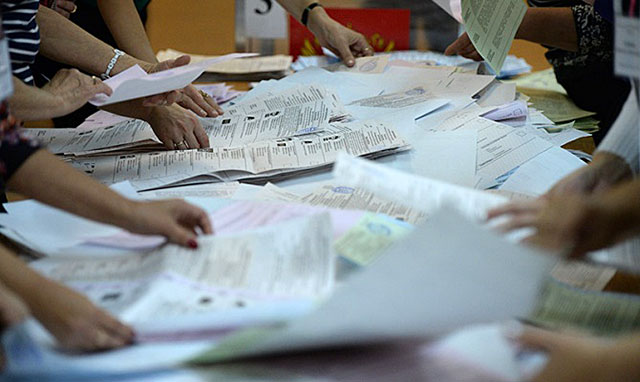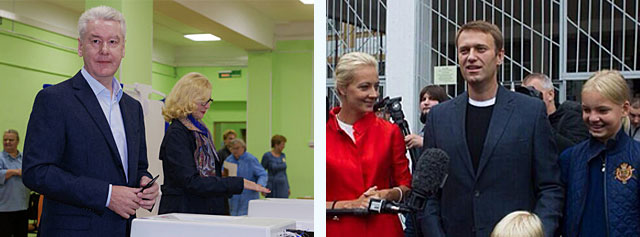On September 8, regional and local elections were held across Russia. Most of the attention was focused on Moscow, where opposition mayoral candidate Alexei Navalny received nearly 30 percent of the vote. IMR Senior Policy Advisor Vladimir Kara-Murza argues that September 8, 2013, will prove to be a turning point for the current regime—the day when a political alternative emerged in Russia.

The main outcome of Russia’s September 8 regional elections —above all, of the mayoral election in Moscow—has been the demise of the longstanding political monopoly of Vladimir Putin’s regime. Although it has not yet won, at least numerically, a political alternative to the Kremlin has emerged—and that is a dangerous sign for any authoritarian system.
The nearly 30 percent of the vote received (even officially) by Alexei Navalny in the Russian capital ends the talk about the “marginal” nature of the Russian opposition; its lack of public support and electoral prospects; and the absence of alternatives to the current government, which has allowed it to neutralize potential dangers even at the peak of mass protests in 2011-2012. The “negative” factor—falling support for the regime—proved insufficient. It takes someone able to challenge the authorities to change the political climate. It takes an alternative—both substantive and personal. On September 8, 2013, such an alternative emerged in Russia.
30 percent of the vote received by Alexei Navalny ends the talk about the “marginal” nature of the Russian opposition and the absence of alternatives to the current government.
The decision to allow Navalny to contest the Moscow mayoral election will likely be judged as one of the biggest miscalculations of the regime. In fairness, that decision was not entirely voluntary—despite the Kremlin’s triumphalist talk about defeating the opposition, the 2011-2012 protests have shown the government that (at least in Moscow) blatant violations of democratic procedures against the background of rising protest sentiments can cause unwelcome consequences. Increasing international criticism has also played a role.
Most importantly, the regime was convinced that it could showcase the “openness” and “legitimacy” of the Moscow election with no significant risk to itself. The reasons for this certainty were not only political (such as government control over television and the ability to manipulate the votes of state employees), but also psychological. Many authoritarian regimes fall victim to their own arrogance and seeming invincibility; they start to believe their own propaganda. After all, who is Navalny, from the Kremlin’s point of view? A nobody; a blogger who has never held a high office; does not have a personal fortune; and lives in an apartment bloc in a southern Moscow suburb; “this gentleman,” as Putin dismissively referred to him. It is not surprising that Putin stubbornly refused to call Navalny by name—for him, there was simply no such person. Furthermore, in the summer (when the decision to allow Navalny to run was being taken) pro-Kremlin pollsters assured the authorities that Navalny’s support does not exceed 6 percent; while pro-Kremlin “experts” promised that this number would be a “ceiling” for the opposition candidate. So why not kill two birds with one stone by simultaneously showing that elections in Russia are “free and fair,” and that the opposition has no public support?

Sergei Sobyanin (left) and Alexei Navalny
The effect for the Kremlin has been the opposite of what was intended. The opposition, as is now evident, not only has electoral support; it has a resource that the current government lacks—genuine public enthusiasm; people’s confidence; civic mobilization. Thousands of campaign volunteers; millions of rubles in individual donations; and daily face-to-face contact with voters proved stronger than media censorship and administrative pressure. The 1.4 percent that provided Sergei Sobyanin’s official “victory” in the first round was mainly gained by “home voting” (mobile ballot boxes that are much more prone to manipulation), and a nearly 100-percent tally in pretrial detention centers, psychiatric wards, and old people’s homes. It is hardly possible in this situation to talk about any kind of “legitimacy” of the pro-Kremlin mayor. According to a Moscow-wide parallel vote count conducted by independent poll monitors (including Golos, Sonar, Citizen Observer, and other such groups), Sobyanin received 49.4 percent of the vote versus 28.5 percent for Navalny—which means that a runoff must be held with these two candidates. The runoff is being demanded not only by Navalny’s campaign, but also by the tens of thousands of Muscovites who rallied on Bolotnaya Square on September 9—more proof that the protests are not going anywhere.
In the regions, where the regime did not see the need to observe “democratic” niceties, elections were accompanied by the usual tricks. “Unwanted” parties and candidates were removed from the ballot in advance. In Khakassia, the authorities barred the Republican Party of Russia–People’s Freedom Party (RPR–PARNAS) from the vote. In the Yaroslavl Region, Civic Platform (whose list was headed by the recently arrested mayor, Yevgeny Urlashov), was denied registration. Civic Platform candidates were also barred from gubernatorial elections in the Vladimir and Zabaykalsky Regions. In Petrozavodsk, the authorities removed Yabloko’s mayoral candidate, Emilia Slabunova, from the ballot. In many regions, poll monitors documented serious violations (such as ballot stuffing, “carousel voting,” mass transportation of voters, and the eviction of monitors from polling places) on election day itself.
According to the parallel vote count, Sobyanin received 49.4 percent versus 28.5 percent for Navalny—which means that a runoff must be held with these two candidates.
Despite all this, the opposition still managed to show its strength in the regions. In Yekaterinburg, Russia’s fourth-largest city, Civic Platform’s mayoral candidate, Yevgeny Roizman, defeated United Russia nominee Yakov Silin by 33.3 to 29.7 percent (mayoral elections in Yekaterinburg are won by a plurality). In the Yaroslavl Region, despite the television censorship and voting day irregularities, the RPR–PARNAS list headed by Boris Nemtsov has passed the five-percent threshold; Nemtsov was elected to the regional Parliament. In central Yaroslavl, even according to the official vote count, the People’s Freedom Party received 16.5 percent of the vote to 24.0 percent for United Russia. In Petrozavodsk, independent candidate Galina Shirshina, who was backed by the opposition, defeated incumbent United Russia Mayor Nikolai Levin by 41.9 to 28.9 percent.
The authoritarian “power vertical,” control over the media, manipulations of the electoral process, and the determined elimination of potential opponents have allowed the regime to significantly delay the political development of Russian society and, for years, prevent the emergence of an alternative. On September 8, 2013, the alternative has finally emerged. For the current inhabitants of the Kremlin, that day will prove to have been a point of no return.

